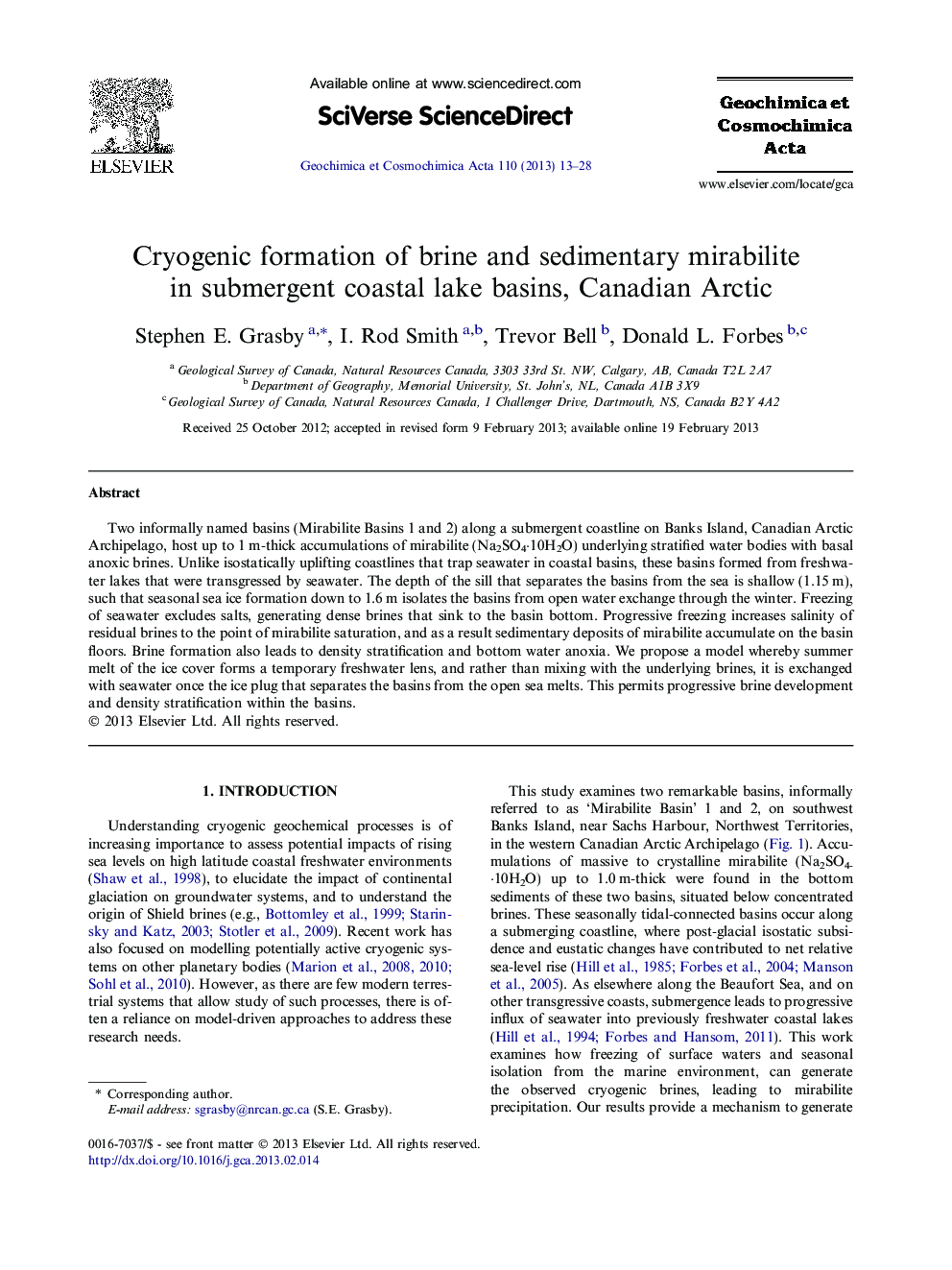| Article ID | Journal | Published Year | Pages | File Type |
|---|---|---|---|---|
| 4702481 | Geochimica et Cosmochimica Acta | 2013 | 16 Pages |
Two informally named basins (Mirabilite Basins 1 and 2) along a submergent coastline on Banks Island, Canadian Arctic Archipelago, host up to 1 m-thick accumulations of mirabilite (Na2SO4·10H2O) underlying stratified water bodies with basal anoxic brines. Unlike isostatically uplifting coastlines that trap seawater in coastal basins, these basins formed from freshwater lakes that were transgressed by seawater. The depth of the sill that separates the basins from the sea is shallow (1.15 m), such that seasonal sea ice formation down to 1.6 m isolates the basins from open water exchange through the winter. Freezing of seawater excludes salts, generating dense brines that sink to the basin bottom. Progressive freezing increases salinity of residual brines to the point of mirabilite saturation, and as a result sedimentary deposits of mirabilite accumulate on the basin floors. Brine formation also leads to density stratification and bottom water anoxia. We propose a model whereby summer melt of the ice cover forms a temporary freshwater lens, and rather than mixing with the underlying brines, it is exchanged with seawater once the ice plug that separates the basins from the open sea melts. This permits progressive brine development and density stratification within the basins.
